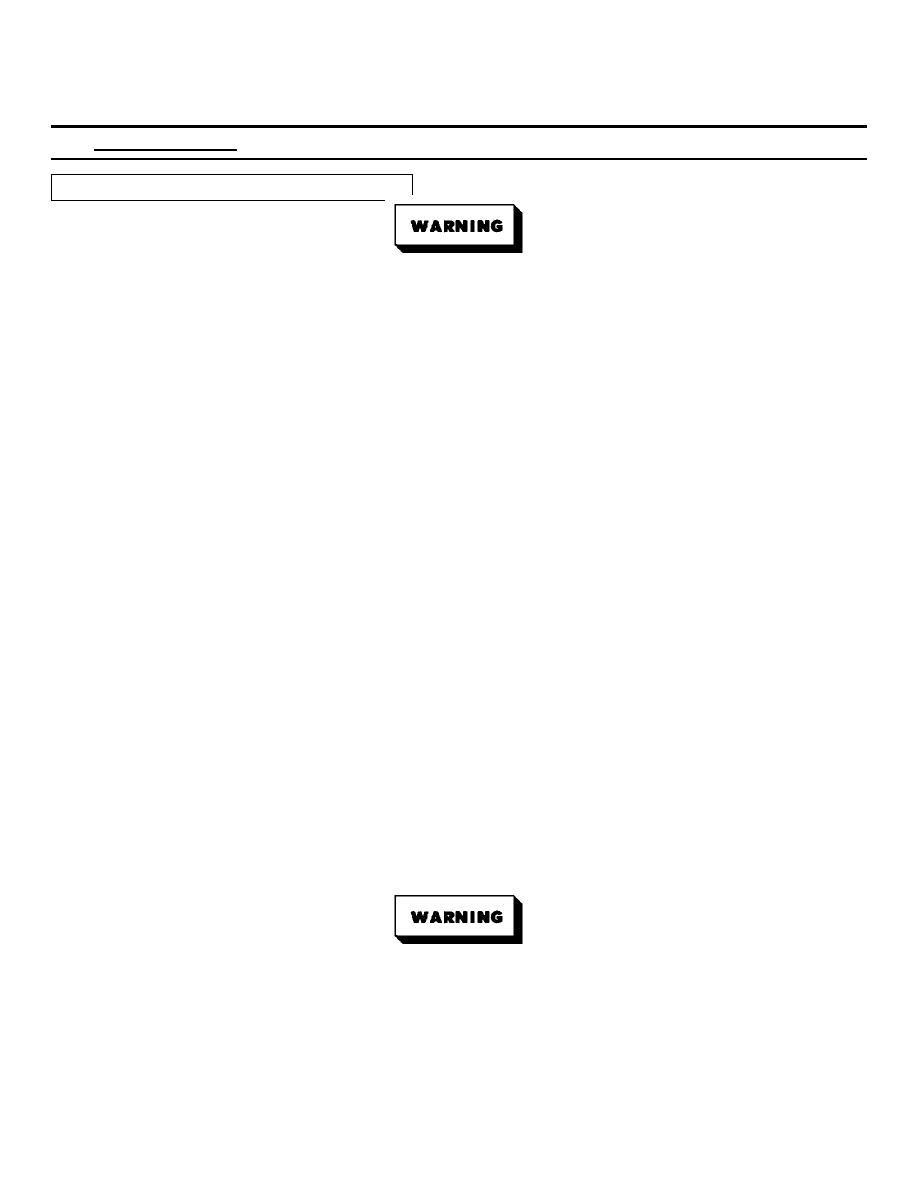
ARMY TM 9-4120-380-14
NAVY EE-000-BA-MMA-010 7053-AC
AIR FORCE TO 35E9-136-21
5.37 COMPRESSOR (B2). - Continued
COMPRESSOR MOTOR BURNOUT INSPECTION
Avoid skin contact or inhaling fumes from any acid formed by burnout of oil and
refrigerant. Wear a gas mask if area is not thoroughly ventilated. Wear protective
goggles or glasses to protect eyes Wear rubber gloves to protect hands.
a.
After removal of a bad compressor from the refrigeration system, remove all external tubing and tip the
compressor toward the discharge port to dram sample of oil into a clear glass container.
b.
If the oil is clean and clear and does not have a burnt acid smell, the compressor did not fail because of
motor burnout If a burnout is not indicated, proceed to INSTALLATION.
c.
If the oil is black, contains sludge, and has a burnt acid odor, the compressor failed because of motor
burnout.
d.
You must clean the entire refrigeration system after burnout has occurred, since contaminants will have been
carried to many corners and restrictions in the piping and fittings These contaminants will soon mix with new
refrigerant gas and compressor oil to cause repeated burnouts.
e.
Remove the drier filter and discard (paragraph 5 23). Connect a cylinder of dry nitrogen to each drier filter
2
flarenut connection in turn and open the cylinder shutoff valve for at least 30 seconds at 50 psig (3 5 kg/cm )
pressure
f.
Connect the two drier filter fittings with a jumper locally manufactured from refrigerant tubing and fittings.
g.
Clean system by back flushing with liquid refrigerant, R-11, from pressurized cylinder or circulating pump and
2
reservoir with pressure of at least 100 psig (7 kg/cm ).
h.
If pump is used, connect the discharge line of the refrigerant system to the discharge side of the pump.
i.
Connect a line containing a filter to the suction line in the unit
NOTE
An unused drier filter or other suitable medium may be used as a filter.
j.
The other end of the temporary suction line should be connected to a small drum or suitable reservoir.
k.
A line should be run from the bottom of the reservoir to the inlet of the pump.
Avoid skin contact or inhaling fumes from any acid formed by burnout of oil and
refrigerant. Wear a gas mask If area is not thoroughly ventilated. Wear protective
goggles or glasses to protect eyes. Wear rubber gloves to protect hands.
l.
Fill reservoir with fluorocarbon refrigerant, R- 11, and start the pump. Continue filling the reservoir with
refrigerant, R- 11, until it begins to pour out of the return line. Continue flushing for at least 15 minutes.
5-93

